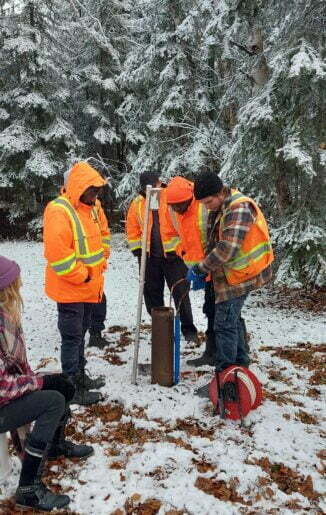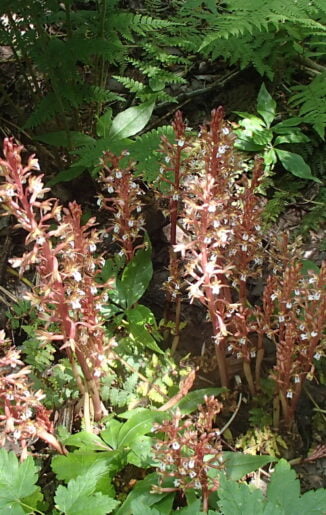Mining projects in Quebec may be subject to two different authorization processes, one provincial with the Ministère de l’Environnement, de la Lutte contre les changements climatiques, de la Faune et des Parcs (MELCCFP) and one federal with the Impact Assessment Agency of Canada (IAAC). The processes are triggered by the quantity of ore to be processed per day. A mining project must be assessed by the Quebec government if more than 2,000 tonnes of ore are processed per day, and by the federal government if more than 5,000 tonnes of ore are processed per day. In the case of the Marban Alliance Project, both levels of assessment will be necessary, since 16,500 tonnes per day will be processed. Both processes can take several years. During both processes, the public is invited to submit questions and comments about the project at the various stages of development.
We understand that these processes are complex. We invite you to communicate with us to clarify any part of the processes.
As part of the provincial process, citizens are invited to participate by submitting questions and comments on two occasions. To begin the process, the proponent must file a project notice. At this stage, the broad outlines of the project are defined, but the details are not yet known, as the proponent does not yet know the real impacts of the project. The first public consultation takes place after this notice is filed. Following this consultation, a summary of public contributions is sent to the proponent to present any questions and comments. This first step allows the government to establish the guidelines for the environmental impact assessment, enabling the proponent to initiate the assessment. The second consultation period takes place after the environmental impact assessment has been submitted. This period of Bureau d’audience publiques sur l’environnement (BAPE) activity can take many forms: public information, public hearings, targeted consultations or mediation. The BAPE report is used by the Ministère de l’Environnement to produce the MELCCFP report and to guide the provincial government’s decision.
The federal government’s project assessment is carried out at the same time as the provincial assessment. In this process, the public is consulted on three occasions. To begin the process, the proponent must submit an initial project description (IPD). Following the submission of the IPD, the Agency’s first public consultation begins. Questions and comments collected during this consultation are sent to the proponent in the summary of public contributions. The answers to the public’s questions are incorporated into the detailed project description (DPD) that the proponent must submit to the Agency. It is important to note that at this stage, many questions remain unanswered, as the impact assessment has not yet been completed. Once the DPD has been submitted, the Agency determines whether an impact study is required. If the Agency determines that the assessment is required, it holds a second public consultation on the participation plans and guidelines. This consultation enables the Agency to issue the final requirements for the impact study. On receipt of the requirements, the proponent can initiate the impact study. Following the second consultation, the Agency implements the public participation plans. The impact assessment phase begins when the proponent submits the environmental impact study. During this period, the Agency can carry out participatory activities and consultations at any time it deems necessary. The federal government then decides whether the project can go ahead.
Our team is conscientious about the environment surrounding our projects.
Since 2018, a multitude of environmental studies have been carried out on the Marban Alliance site. Here is an overview of these preliminary studies.


Respect for host communities is essential throughout the development and implementation of a mining project. For O3 Mining, social acceptability is an evolving process and is at the very heart of its day-to-day actions. In concrete terms, this is demonstrated by the transmission of information on the progress of its project, by the hosting of community meetings and by concrete gestures and actions aimed at preventing or responding to expressed concerns. The participatory approach is designed to improve harmonization, projects and acceptability.
Ongoing : Individual meetings with the residents surrounding the project
Information and Discussion Meetings
Ongoing : Individual meetings with residents surrounding the project
February to June : Meetings with citizens’ groups, local environmental groups and other organizations
June : Neighbourhood information and discussion meeting
September : Information and Discussion Meeting: work follow-up
October : Workshop on a property value maintenance program
November : Workshop on the deviation of the Keriens waterway – November 14th
May : Specific consultation meetings with property owners in the Gervais-Desboisé and Vassan-Norrie neighbourhoods
August to December : Individual meetings with residents surrounding the Marban Alliance Project
September : Community Information Meeting
November : Workshop with local hunters
September : Community Information Meeting
*Schedule subject to change
**A specific participatory approach will also be proposed to indigenous communities involved in the Marban Alliance Project
Consult the minutes of information and consultation meetings to stay informed about the progress of the Marban Alliance project. (available in French)